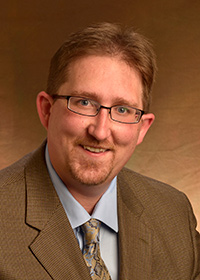Research Highlight: Steven Skutnik

The question of what to do with spent nuclear fuel in the United States has never been definitively answered. A UT professor has received funding from the US Department of Energy (DOE) to develop new capabilities for evaluating potential alternatives to directly disposing of used fuel. The award is part of the DOE’s 2013 Nuclear Energy University Programs (NEUP) initiative, which is awarding $42 million to thirty-eight American universities and colleges for nuclear energy research and development projects focused on innovative solutions.
A proposal by Steven Skutnik, assistant professor in nuclear engineering, was awarded $755,000 to develop new capabilities for a fuel-cycle simulator called CYCLUS by building on an Oak Ridge National Laboratory (ORNL) software package for nuclear fuel modeling called ORIGEN. The resulting tool, called a flexible reactor analysis module, will allow scientists to assess the relative benefits of different choices for managing spent nuclear fuel such as directly disposing of it, storing it for extended periods, or reprocessing it to recover materials for reuse as fuel in a reactor.
Many countries choose to chemically reprocess their used nuclear fuel, which can extract more energy out of fuel and reduce the total long-lived waste. However, US policy states that used nuclear fuel is designated for direct disposal. Recently, a plan to dispose of spent fuel at Yucca Mountain in Nevada has been scrapped, leaving the nation without a long-term home for the radioactive material, so DOE is investigating several alternative fuel cycle strategies. Skutnik’s project will help assess how different fuel cycle choices influence factors such as the demand for raw resources, nuclear waste management, and nuclear facility designs.
The goal is to help the public and policymakers understand the impacts and trade-offs of various nuclear fuel cycle options. “If we’re going to consider significant changes to policies which impact the nuclear fuel cycle, it’s helpful to have tools to tell us what we can expect the impacts are going to be,” said Skutnik.
Collaborating institutions are ORNL and National Nuclear Laboratory in the United Kingdom. The NEUPs support multifaceted projects to develop breakthroughs for the US nuclear energy industry. Universities lead the three-year projects, working in collaboration with the nuclear industry, national laboratories, and international partners.